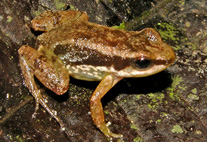Abstract
All records of the 15 hexactinellid sponge species known to occur off Chile are reviewed, including the first record in the Southeastern Pacific of the genus Caulophacus Schulze, 1885, with the new species Caulophacus chilense sp. n. collected as bycatch in the deep water fisheries of the Patagonian toothfish Dissostichus eleginoides Smitt, 1898 off Caldera (27ºS), Region of Atacama, northern Chile. All Chilean hexactinellid species occur in bathyal to abyssal depths (from 256 up to 4142 m); nine of them are reported for the Sala y Gomez and Nazca Ridges, with one species each in the Juan Fernandez Archipelago and Easter Island. The Chilean hexactinellid fauna is still largely unknown, consisting of only 2.5 % of the known hexactinellid extant species. Further studies and deep water sampling are essential to assess their ecology and distribution, particularly in northern Chile.

